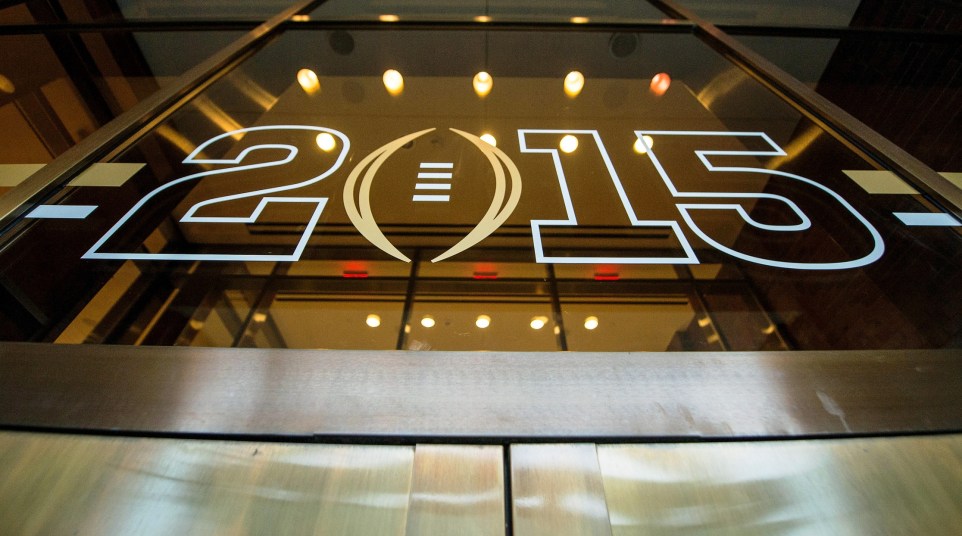Level playing field, autonomy don't jive in college football
The power conferences presented a giant Gadsden Flag to the NCAA in 2014.
Don’t Tread On Me. Or else we’ll revolt and the NCAA as we know it will cease to exist.
Not surprisingly, the NCAA caved, as its Division I board of directors approved autonomy for the ACC, Big 12, Big Ten, SEC and Pac-12 by a 16-2 vote in August.
The move allowed the five most powerful conferences to write many of their own rules.
From ESPN.com’s story about the historic vote: “The autonomy measures … will permit those leagues to decide on things such as cost-of-attendance stipends and insurance benefits for players, staff sizes, recruiting rules and mandatory hours spent on individual sports.”
It’s curious, then, that so many of the SEC’s coaches and administrators are crying out for a level playing field this week.
Do we want a free-market economy, or a highly-regulated one? It’s impossible to have both.
The SEC didn’t cry when it dominated College GameDay broadcasts in 2014. There were no demands of equal time for all within the Southeastern United States even as other fan bases yelled and moaned.
The reality is that things are not equal. Power-conference Alabama and Group of 5 UCF aren’t equal. Ohio State and Vanderbilt aren’t equal. And, in a weird way, that free-market inequality has done more to promote parity in college football than anything.
Would Ole Miss and Mississippi State be able to pay college football coaches more than $4 million per year without an influx of cash from the SEC Network?
None of the recent developments — the facilities arms race, realignment, astronomical TV revenue growth — would be as acute without cut-throat competition between the country’s best programs. It has caused everyone else to spend or get left behind.
Guest coaching at a high school clinic is nothing more than a recruiting tour. The SEC is right about that.
But if Big Ten programs want to spend the time and funds to have Jim Harbaugh or James Franklin give instruction to high school kids throughout Alabama, Georgia and Florida, why stop them? At least it’s creating real-world value for kids — getting instruction from multi-million football coaches while they’re still in high school — rather than yet another barrage of Twitter direct messages, souped up recruiting letters to girlfriends or late-night, study-interrupting texting sessions.
If that puts the SEC at a disadvantage, well the SEC coaches should pool some offseason time and storm into Ohio, California, Texas, and any other place where there’s a high concentration of talent.
As far as cost of attendance, it’s a minor extension to what already is a huge disparity. A football scholarship to Kentucky ($21,464) isn’t worth the same, in monetary value, as a football scholarship to Notre Dame ($62,825).
So, due to cost of attendance differences — which, by the way, are federally regulated — Auburn can pay a player an additional $2,694 during the course of a year than Alabama. Big deal.
Should an extra $224.50 per month be the difference in attending one school over the other? Alabama’s base scholarship is worth $964 more. Surely the overall monetary differences are negligible when taking into account NFL preparation, the amount of free team gear every player gets, the difference in bowl gift packages, the amount and quality of cafeteria food, the value of the education programs and a myriad of other things.
Cost of attendance is just one more selling point — or detraction — along with what’s sometimes dozens of other attributes that prospective student-athletes consider when selecting a school.
There may be an Option C here. Perhaps the power conferences could create their own version of an independent regulating body. But that may necessitate a revolt from the NCAA, which seems much less likely now.
In 2015, there’s no such thing as an equal playing field in college football. For most SEC schools, that’s a very good thing. The conference should focus on racking up as many competitive advantages of its own as possible, with respect to ethics in recruiting and ensuring it looks out for the welfare of its athletes.

